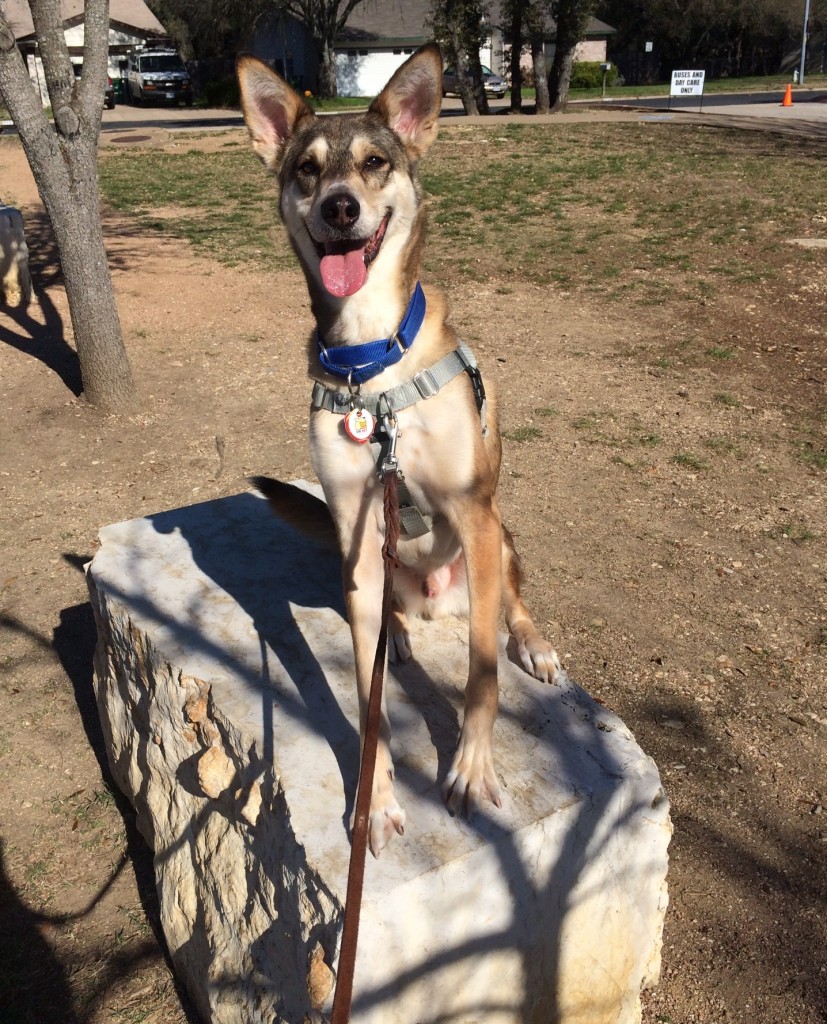We know that dogs communicate with us all of the time, whether we notice it or not. However, can they let us know when they have learned a skill we are teaching? Stanley Coren says yes, in his article, “Does A Dog’s Body Language Tell Us How Much He Has Learned?”
The Seed Is Planted
 Coren began paying attention after a dog trainer mentioned that he noticed his dogs almost exhibited pushy, “dominant” behavior when they started to catch on to a new behavior. Instead of lolling tongues and wagging tails, the ears would go forward and tails up.
Coren began paying attention after a dog trainer mentioned that he noticed his dogs almost exhibited pushy, “dominant” behavior when they started to catch on to a new behavior. Instead of lolling tongues and wagging tails, the ears would go forward and tails up.
One he started paying attention, Coren began noticing this as well, mostly in dogs that were relatively new to learning. He then found a Japanese study that had looked into this premise. It was a team from the Azabu University School of Veterinary Medicine and was headed by Masashi Hasegawa.
The Study
The study involved 46 dogs with no prior obedience training. The goal was to teach them to sit using just a hand signal. They used luring – moving a food treat from in front of the dog’s nose to over their head to lure them into a sit. The sessions were 5 minutes long and documented via video. Video was also taken of the dogs during non-training times to compare behaviors. The videos were then scored, focusing on the ears, mouth, eyes, tail carriage, and wagging.
The Body Language Results
Mouths: Successful dogs were more prone to keeping their mouths shut, generally a sign of focus and concentration.
Ears: Successful dogs would have their ears rotated forward which is, again, a sign of focused attention.
Eyes: Successful dogs had wider than normal eyes, especially when staring at their trainer.
Tail: Successful dogs generally held their tail high and still, or vibrating slightly.
Is It Dominance?
Coren feels that “dominance” is too strong of a word for the behaviors exhibited. He feels that the successful dogs are showing strong, confident behavior once they have figured out the task. They get bolder and more pushy once they have “solved” the problem, and they want to keep training to continue earning treats.
Impact For Modern Dog Trainers
So what does this mean for you, as a modern dog trainer? We generally consider closed mouths, forward ears, and high, barely moving tails as signs of intensity and possibly nearing their threshold, so we often try to take things down a notch when we see these occurring. You will need to keep in mind that if you are training a green dog, or teaching a brand new skill, these behaviors may pop up and you should celebrate them. The dog is telling you she’s got it! Obviously, everything needs to be kept in context – if you are working with a reactive dog outside, he MAY be going over threshold. So it will be up to you to monitor the surroundings and take in the big picture.
Have you noticed these behaviors in any dogs that you’ve been training? Tell us about it!
Dog Training Business Tips
Receive valuable dog training business tips and resources right in your inbox! Subscribe to The Modern Dog Trainer now by submitting your name and email below. Don’t forget to let us know what you want to learn more about!
[mc4wp_form]



